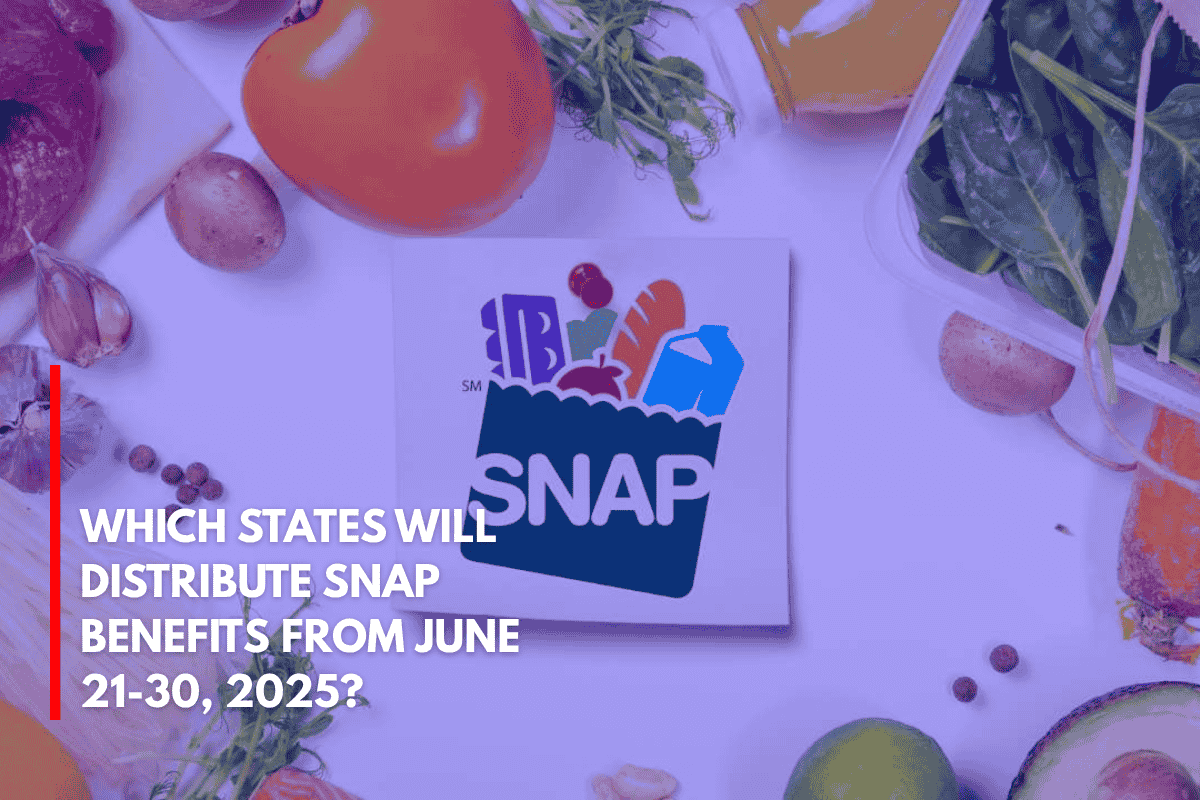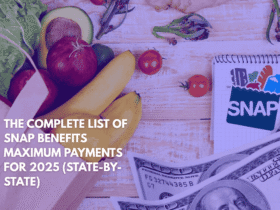For millions of Americans, Supplemental Nutrition Assistance Program (SNAP) benefits are a critical part of their monthly food budget. In June 2025, the distribution of SNAP benefits is happening between June 22 and June 30 in several states. As each state has its own schedule, recipients should confirm their exact payment dates with local agencies.
SNAP Benefit Distribution in Key States
Several states, including California, New York, Texas, Florida, Illinois, Pennsylvania, Georgia, and North Carolina, follow the distribution period of June 22 to 30.
However, most of these states distribute funds throughout the month, depending on the size of the beneficiary population. Let’s take a closer look at how some of the states distribute their benefits:
Florida: SNAP benefits are distributed based on the last digits of the recipient’s Social Security number. SUNCAP recipients receive initial payments in the first few days of the month, and regular deposits continue through June 30. Florida doesn’t provide a detailed daily schedule publicly.
Texas: The state uses an Eligibility Determination Group (EDG) system. Payments are made between June 16 and 28 for EDG numbers 00-99. Some beneficiaries will receive their funds as early as June 22.
North Carolina: The state finishes its distribution by June 21 and does not make additional deposits after that.
New York: SNAP benefits are distributed between June 1 and 30, with some counties extending payments depending on caseloads.
California: Most benefits are distributed between June 1 and 10, though some exceptional cases may receive them later.
Missouri and Arkansas: Payments are completed by June 22.
Maximum SNAP Benefit Allotments for 2025
As of June 2025, the maximum SNAP benefits for each household size in 48 states and Washington D.C. are as follows:
1 person: $292
2 people: $536
3 people: $768
4 people: $975
5 people: $1,158
6 people: $1,390
7 people: $1,536
8 people: $1,756
Each additional member: $220
These amounts reflect the Cost-of-Living Adjustments (COLA) made for fiscal year 2025. These adjustments are made to help households keep up with rising food prices.
A Quick Review of SNAP Benefits
The SNAP program is administered by the U.S. Department of Agriculture (USDA) through the Food and Nutrition Service (FNS). The main goal of SNAP is to provide food assistance to low-income families.
The program works by providing benefits via an Electronic Benefit Transfer (EBT) card, which can be used to buy food such as fruits, vegetables, meats, dairy products, and other basic essentials.
However, SNAP benefits cannot be used for items like alcohol, tobacco, cleaning products, hot prepared meals, or dietary supplements.
To qualify for SNAP, a household’s income must not exceed certain limits:
Gross income: Must be at or below 130% of the federal poverty level. For example, in 2025, this means a single person must have a gross income of $1,632 or less, and a family of four must have a gross income of $3,380 or less.
Net income: Must be at or below 100% of the federal poverty level. For instance, in 2025, the net income limit for one person is $1,255 and for a family of four is $2,600.
Liquid assets: Households must have no more than $3,000 in assets, or $4,500 for households with elderly or disabled individuals.
Deductions That Can Reduce Your Income for SNAP Eligibility
When determining SNAP eligibility, there are several deductions that can reduce your household income:
Standard deduction: $204 for households, with higher amounts for larger households.
20% of labor income: Employment income is partially deducted.
Childcare expenses: Can be deducted from your income.
Medical expenses: For seniors or disabled individuals, medical expenses over $35/month are deducted.
Excessive housing expenses: Deductions are available for high housing costs.
Work Requirements for SNAP Recipients
There are work requirements for certain recipients of SNAP:
ABAWDs (Able-Bodied Adults Without Dependents): Individuals aged 16 to 59 must work or participate in job training for at least 80 hours per month. Starting October 2024, the age limit for this requirement will increase to 54.
Exemptions: Some people are exempt from these work requirements, including:
-Students
-Caregivers
-People with disabilities
-Veterans
-Pregnant women
-Homeless individuals
-People with medical limitations











Leave a Reply